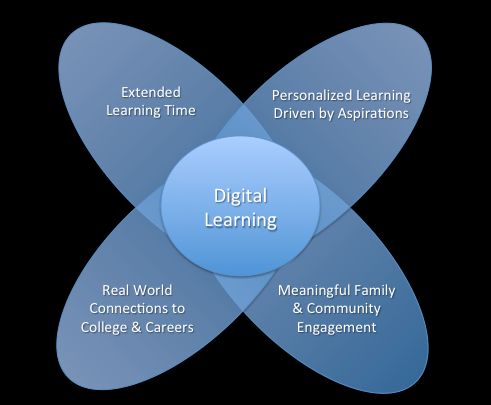Today's Presentation: https://docs.google.com/a/wgcloud.org/presentation/d/1F8zBZeCpknoUkDwP3CddgnabFi1-Tit8ZuMS2yFqgmI/edit#slide=id.p40
Working with adults and young adults:
- Don't want your time with Pedogogy use Andragogy
- Use universal designs for learning
- Use TPACK to design lessons and activities for the reluctant technologists.
Get REAL - Relevant Engaging and Applied Learning
Is it more important to SOLVE a problem or to FIND a problem. Employers want them to FIND.
Are students okay with there not being able to find one right answer.
PARCC state model content framework
Cite Evidence - Analyze Evidence - Study and apply grammer - Study and apply vocabulary - Conduct discussion - Report findings
smarter balanced assessment consortium
Move to Constructed response and performance task assessment items
College and Career Readiness Anchor standards
Mathematical standards of practice - Common Core
Getting REAL about performance tasks:
- Re-professionalize our profession: Blended learning rounds (think medical rounds)
- Build internal capacity
- Personalized learning based on "flight time"not "seat time"
- Aspirations to create opportunities for applied learning
Performance Task Design
5 things that are KEY to teacher evaluation
- Measure what is required (legislation and incentives)
- Measure what is valued (all the things we expect teachers to do)
- Develop and make available to teachers and evaluators the standards by which teachers will be evaluated
- Familiarize teachers with tools and processes of the evaluation
- Measure performance against the standards
Pathway to effective teaching from the Gates Foundation:
Great resource for Project Based Learning:
How can we use Student interest and concerns to leverage student learning:
2. Log in with:
nmste
synergy
Do you have a dream? You can build your "dream team" set up to work together to acheive your dreams: http://www.mydreammachine.com/
More Project Based Learning resources:
Social Learning: https://room21online.com/
How TPCK impacts curriculum
Drew's post: http://www.drewmcallister.net/blog/category/ideas/
The 5 basic Instructional design steps:
- Choose learning goals
- Making practical pedagogical decisions about the nature of the learning experience
- Selecting and sequencing appropriate activity types to combine to form the learning experience
- Selecting formative and summative assessment strategies that will reveal what and how well students are learning
- Selecting tools and resources that will best help students to benefit from the learning experience being planned
Wrapped up the day answering e-mails.






No comments:
Post a Comment